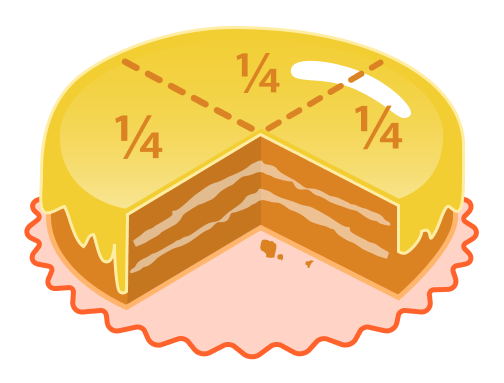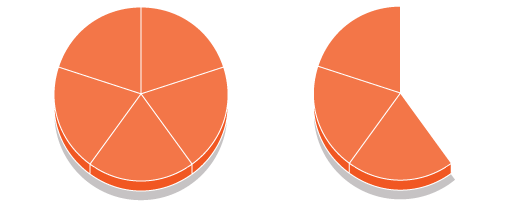Fractions

Fractions are used in everyday situations. We use fractions all the time even though we may not think in numbers.
A fraction is a number which represents part of a whole.
For example above we have looked at a fraction ¼ sometimes pronounced as 1/4 “one out of 4” meaning one thing out of 4 things. The word fraction comes from the Latin word fractus meaning “broken”. Types of fractions include compound fractions, complex fractions and mixed fractions. A fraction consists of a numerator and denominator. A numerator and denominator have been shown below;

The first number above the line is called a numerator, which represents the number of equal parts in a unit/whole.
The number below is called the denominator. The denominator represents how many of the numerator makes up a unit or a whole. The denominator can never be zero as you’ll be saying zero numerator make up a unit and that would not make sense.
In the fraction ¾ the numerator, 3, tells us that the fraction represents 3 equal parts and the denominator 4 tells us 4 of those parts make up the entire unit or whole. Since ¼ of the cake have been cut out from the picture above the remainder is ¾ since there are 3 ¼ parts cut out of a possible 4.
There are other ways to write fractional numbers without using explicit numerators or denominators, We can also use decimals, percentages and negative exponents to represent a fractional quantity, for example;
![]()
Here is more examples of working with fractions.
If you cut a circular shape into 2 equal parts and take away one, half (½) of the shape will be left. For instance if you cut a pizza into 2 equal parts you take away ½ and leave ½.

However if you cut the shape into five equal parts/pieces take away 2 of the parts you will have 3/5 left.

Below is a list of sections covered in this series of articles. Click on the list to explore further.
- Fractions of a quantity
- Proper fractions
- Improper fractions
- Mixed fractions/numbers
- Similar fractions
- Equivalent fractions
- Cancelling fractions
- Greatest common factor
- Least common denominator
